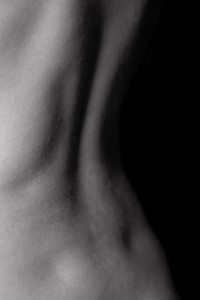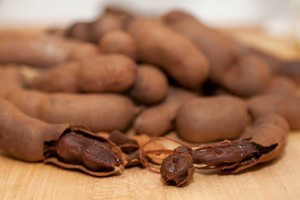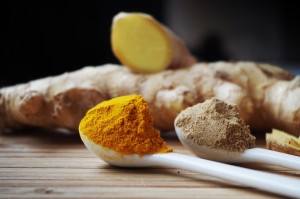D Vitamin Deficiency
ARE MY VITAMIN D levels LOW? Signs aren’t obvious. “EVERYONE should take vitamin D PILLS”. In August 2015 BBC Health news reported this.
What’s our RDA of Vitamin D ? Is our D Vitamin RDA fixed? It’s a hot topic in functional health right now. So, London naturopath, osteopath Susannah breaks it down….
It’s surprising to hear some signs associated with lack of vitamin D. The RDA of vitamin D required for individual health isn’t the same for everyone. READ ON FOR D2 AND D3 VITAMIN REQUIREMENTS.
Living in sunny climate? Global warming affecting your City? Vitamin D not concerning you? Here at Susannah Makram Clinics we see clients from London for osteopathy and naturopathy. They come from all over the world.
We are showing signs Vitamin D deficiency, on a global scale.
Should I Take Vitamin D Supplements?
Pilot studies and regional monitoring suggests that vitamin D deficiency is likely to affect at least 50% white population in the UK. Also, up to 90% multiethnic UK population. 25% children living in Britain will show signs of vitamin D deficiency.
As a London osteopath and naturopath Susannah not only looks for signs of D Vitamin deficiency in clients she’s also interested in the story of our health. STOP BUYING THE WRONG SUPPLEMENTS.
Signs vitamin d deficiency
The same BBC health news article included a guideline. The draft Scientific Advisory Committee on Nutrition guidelines suggest, from the age of one, 10 microgram pills be taken to ensure people get enough. Find vitamin D2 and vitamin D3 and RDA here.

10 Signs of Vitamin D Deficiency
A recent study in Australia revealed that one-third under-25s are vitamin D deficient. Is this surprising given how much sunshine the country gets? It’s not as simple as that.
Government experts are proposing that everyone should consider taking vitamin D supplements to counter the lack of sunshine in the UK.
New estimates suggest one in five adults and one in six children in England may have low levels.
Signs Vitamin D Deficiency
Sign 1. You Have Gut Trouble
Vitamin D is a fat-soluble vitamin, which means that…
If you have a GI condition that affects your ability to absorb fat, you may have lower absorption of fat-soluble vitamins, like vitamin D.
Gut Trouble: This includes gut conditions like Crohn’s, celiac and non-coeliac gluten sensitivity, SIBO and IBS.
Sign 2. You Are Frequently Unwell With Flu or The Common Cold
The active form of vitamin D tempers the damaging inflammatory response of some white blood cells. It also boosts immune cells’ production of microbe-fighting proteins. Vitamin D may be the seasonal stimulus that informs us why the flu virus is predominant in the winter, abating in the summer months.
Hope-Simpson RE. The role of season in the epidemiology of influenza. J Hyg (Lond). 1981; 86:35-47.
Cannell JJ, Vieth R, Umhau JC, et al. Epidemic influenza and vitamin D. Epidemiol Infect. 2006; 134:1129-40.
Ginde AA, Mansbach JM, Camargo CA, Jr. Association between serum 25-hydroxyvitamin D level and upper respiratory tract infection in the Third National Health and Nutrition Examination Survey. Arch Intern Med. 2009; 169:384-90.

signs vitamin d deficiency
Sign 3. Unexplained Autoimmune Disease
Autoimmune disease not confined to Rheumatoid arthritis. Autoimmune disease causing hair loss e.g. Alopecia Areata and skin health concerns such as Vitiligo, are included. Also, autoimmune urticaria (hives), autoimmune thyroid disease – and many more. These all may be explained by assessment of your Vitamin D levels. Vitamin D may reduce inflammation. It may also help prevent autoimmune diseases, including rheumatoid arthritis, multiple sclerosis and Crohn’s disease. However, further high-quality research is needed to confirm these results. Some people may have overactive parathyroid glands due to low levels of vitamin D. Vitamin D is the first treatment for this disorder. Increasing calcium intake, with or without vitamin D, may reduce the risk of underactive parathyroid glands after surgery to remove the parathyroid glands.
Sign 4. Your Bones Ache or You Have Back Pain
This is one of the signs of Vitamin D Deficiency that commonly present in clinic. It is easily missed because low back pain is so prevalent or commonplace. In combination with fatigue misdiagnosis such as having fibromyalgia or chronic fatigue syndrome is common at Susannah Makram Clinics.
Vitamin D deficiency osteomalacia is different from the vitamin D deficiency that causes osteoporosis in adults. What’s happening is that the vitamin D deficiency causes a defect in putting calcium into the collagen matrix in your skeleton. So what you are experiencing is a throbbing, aching bone pain – typically back pain.
Signs Vitamin D Deficiency – Vitamin D deficiency has also been linked to muscle weakness and pain.

Back Pain – Signs of Vitamin D Deficiency
Signs Vitamin D Deficiency
Signs Vitamin D Deficiency. Sign 5. You Are Overweight or Obese (or Have a Higher Muscle Mass)
Vitamin D is a fat-soluble, hormone-like vitamin. This means body fat acts as a “sink” by collecting it. If you’re overweight or obese, you need more vitamin D than a slimmer person.
Signs Vitamin D Deficiency. Sign 6. You Feel SAD
Some studies suggest an association between various mood disorders and low vitamin D levels in the blood. These mood disorders include depression, seasonal affective disorder (SAD) and premenstrual syndrome (PMS). Serotonin – the brain hormone associated with mood elevation – rises with exposure to bright light. Serotonin levels fall with decreased sun exposure. These signs Vitamin D Deficiency may creep up unexpectedly and are easily left untreated.

Should I take vitamin D supplements?
Signs Vitamin D Deficiency. Sign 7. You Have Darker Skin
Recognise signs vitamin d deficiency. Your skin pigment acts as a natural sunscreen. The more pigment you have, the more time is needed in the sun to make adequate amounts of vitamin D.
Signs Vitamin D Deficiency. Sign 8. Excessive Sweating
Excessive sweating in newborns due to neuromuscular irritability is an early symptom of vitamin D deficiency. One of the first signs vitamin D deficiency is a sweaty head. Recognise signs vitamin d deficiency.
Signs Vitamin D Deficiency. Sign 9. You Have Type 1 Diabetes
Vitamin D may play a role in preventing type 1 diabetes. Evidence comes from a 30-year study that followed more than 10,000 Finnish children from birth. From this study it was found that children who regularly received vitamin D supplements during infancy had almost 90% lower risk of developing type 1 diabetes than children not receiving supplements.
Hypponen E, Laara E, Reunanen A, Jarvelin MR, Virtanen SM. Intake of vitamin D and risk of type 1 diabetes: a birth-cohort study. Lancet. 2001; 358:1500-3.
Signs Vitamin D Deficiency. Sign 10. You’re 50 or Older
As we get older our skin doesn’t make as much vitamin D in response to sun exposure. At the same time, our kidneys become less efficient at converting vitamin D into the form used by your body. Older adults tend to spend more time indoors than outdoors in natural sunlight.
The risk of getting too much vitamin D is considered to be extremely low. Vitamin D supplements are available from your GP. Over the counter is available but you should supplement with care. There’s no point in committing to poor quality nutritional supplements. That’s whether you’ve signs of vitamin d deficiency or not.
Follow












